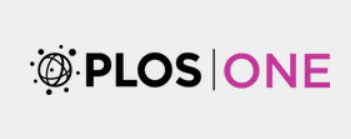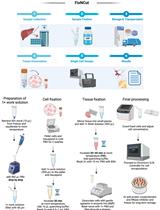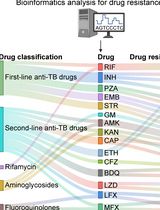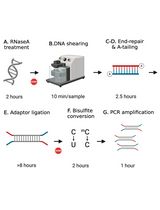- EN - English
- CN - 中文
Preparing Single-cell DNA Library Using Nextera for Detection of CNV
利用Nextera制备检测CNV的单细胞DNA文库
发布: 2019年02月20日第9卷第4期 DOI: 10.21769/BioProtoc.3175 浏览次数: 6695
评审: Adler R. DillmanLorrayne SerraAnonymous reviewer(s)
Abstract
Single-cell DNA sequencing is a powerful tool to evaluate the state of heterogeneity of heterogeneous tissues like cancer in a quantitative manner that bulk sequencing can never achieve. DOP-PCR (Degenerate Oligonucleotide-Primed Polymerase Chain Reaction), MDA (Multiple Displacement Amplification), MALBAC (Multiple Annealing and Looping-Based Amplification Cycles), LIANTI (Linear Amplification via Transposon Insertion) and TnBC (Transposon Barcoded) have been the primary choices to prepare single-cell libraries. TnBC library prep method is a simple and versatile methodology, to detect copy number variations or to obtain the absolute copy numbers of genes per cell.
Keywords: Single-cell (单细胞)Background
Bulk DNA sequencing, although being widely used nowadays, has been proven to be inadequate in analysis of heterogeneous systems, such as cancer tissues, which contain cancer cells of genetic aberrations at various degrees among normal cells with little or no genetic aberrations. Noncancerous cells can contribute a significant portion of the total DNA extracted from tumors, potentially masking important genetic aberrations (Alioto et al., 2015). Even when normal cells are removed, bulk sequencing of cancerous cells still averages out both the heterogeneity of cancerous cells in a tumor tissue and genomic instability over time (Yang et al., 2013; Francis et al., 2014). Single-cell DNA sequencing is believed to be the only method to reveal unequivocally the dynamics of mutations of tumor cell subpopulations in detail over space and time (Navin, 2015). Copy number variations (CNV) is under-detected in bulk sequencing, while they are found to be early events in tumorigenesis (Navin, 2015).
In the past years, several single-cell library preparation methods have been reported, which include DOP-PCR (Baslan and Hicks, 2014), MDA (Fan et al., 2011), MALBAC (Zong et al., 2012), LIANTI (Chen et al., 2017) and TnBC (Xi et al., 2017). Due to the fact that the minute amount of DNA from a single cell is not sufficient for NGS directly for most purposes, the single-cell genome needs to be amplified. Reflecting this requirement, almost all single-cell library preparation methodologies are named after an amplification method. As amplification is involved, the biases and errors associated with amplification inevitably need to be addressed (Xi, 2018). Biased amplification will require deeper sequencing to gain coverages. In an extreme case, under-amplified regions can be falsely identified as deletions. Amplification errors introduced by polymerases may overwhelm authentic mutations, which adds difficulty in mutation-calls. As TnBC methodology employs unique fragment index (UFI), it can handle amplification biases and polymerase-introduced errors better than other methods do (Xi et al., 2017; Xi, 2018).
An engineered Mu transposase was used in our original paper of TnBC library preparation (Xi et al., 2017). Since preparing custom-made transposases is technically demanding and time-consuming, here we report a protocol that utilizes Nextera, a commercially available Tn5 transposase. This protocol is intended to obtain single cell libraries that will be good for CNV detection through shallow sequencing. Due to the proof-reading DNA polymerase that is used in our library amplification, the error rate can be significantly smaller than that from DOP-PCR, MALBAC, or LIANTI. Therefore, the aggregate of sequences from multiple single cells can be used to detect global SNV of the source tissue of the single cells (Knouse et al., 2016).
Materials and Reagents
- Pipette tips
- 96-well plate
- Read1: TCGTCGGCAGCGTCAGATGTGTATAAGAGACAG (suggested source: custom order from IDT)
- Read2: GTCTCGTGGGCTCGGAGATGTGTATAAGAGACAG (suggested source: custom order from IDT)
- TBE buffer: Make 1x from 10x TBE (suggested source: Tris-borate-EDTA Buffer from Fisher Scientific, catalog number: B52)
- Nextera DNA Library Preparation Kit (24 samples) (suggested source: Illumina, catalog number: FC-121-1030)
- Nextera Index Kit (96 Indices) (suggested source: Illumina, catalog number: FC-121-1012)
- Phusion Hot Start II High-Fidelity PCR Master Mix (Thermo Fisher, catalog number: F565L)
- UltraPureTM 0.5 M EDTA, pH 8.0 (suggested source: Thermo Fisher, catalog number: 15575020)
Note: Make 10 fold dilution as working stock (100 mM). - 20x EvaGreen (Biotium, catalog number: 31000)
- Agencourt AMPure XP (Beckmen Courtier, catalog number: A63882)
- Proteinase K, Molecular Biology Grade (New England Biolabs, catalog number: P81075)
- Chymostatin (5 mg) (Sigma-Aldrich, catalog number: C7268-5MG)
Note: Dissolve in 0.83 ml of DMSO to make 6 mg/ml stock solution. - Double-distilled H2O (ddH2O)
- DMSO (Dimethyl sulfoxide)
- Ethanol, freshly make 75% ethanol for Agencourt AMPure XP bead washes
- Tris-HCl, 1 M, pH 8 (suggested source: Thermo Fisher, catalog number: AM9856)
- MgCl2, 1 M (suggested source: Thermo Fisher, catalog number: AM9530G), or equivalent
- DMF (Dimethylformamide)
- CLOROX bleach
- 5x Transposase buffer (see Recipes)
Equipment
- Pipettes
- DNA-free hood
- VeritiTM 96-Well Thermal Cycler (Thermo Fisher, catalog number: 4375786)
- QuantStudio 3 Real-Time PCR System (Thermo Fisher)
- DynaMagTM-96 Side Magnet (Thermo Fisher, catalog number: 12331D)
- Agilent BioAnalyzer
Procedure
文章信息
版权信息
© 2019 The Authors; exclusive licensee Bio-protocol LLC.
如何引用
Xi, L., Leong, P. and Mihajlovic, A. (2019). Preparing Single-cell DNA Library Using Nextera for Detection of CNV. Bio-protocol 9(4): e3175. DOI: 10.21769/BioProtoc.3175.
分类
分子生物学 > DNA > DNA 测序
您对这篇实验方法有问题吗?
在此处发布您的问题,我们将邀请本文作者来回答。同时,我们会将您的问题发布到Bio-protocol Exchange,以便寻求社区成员的帮助。
Share
Bluesky
X
Copy link













